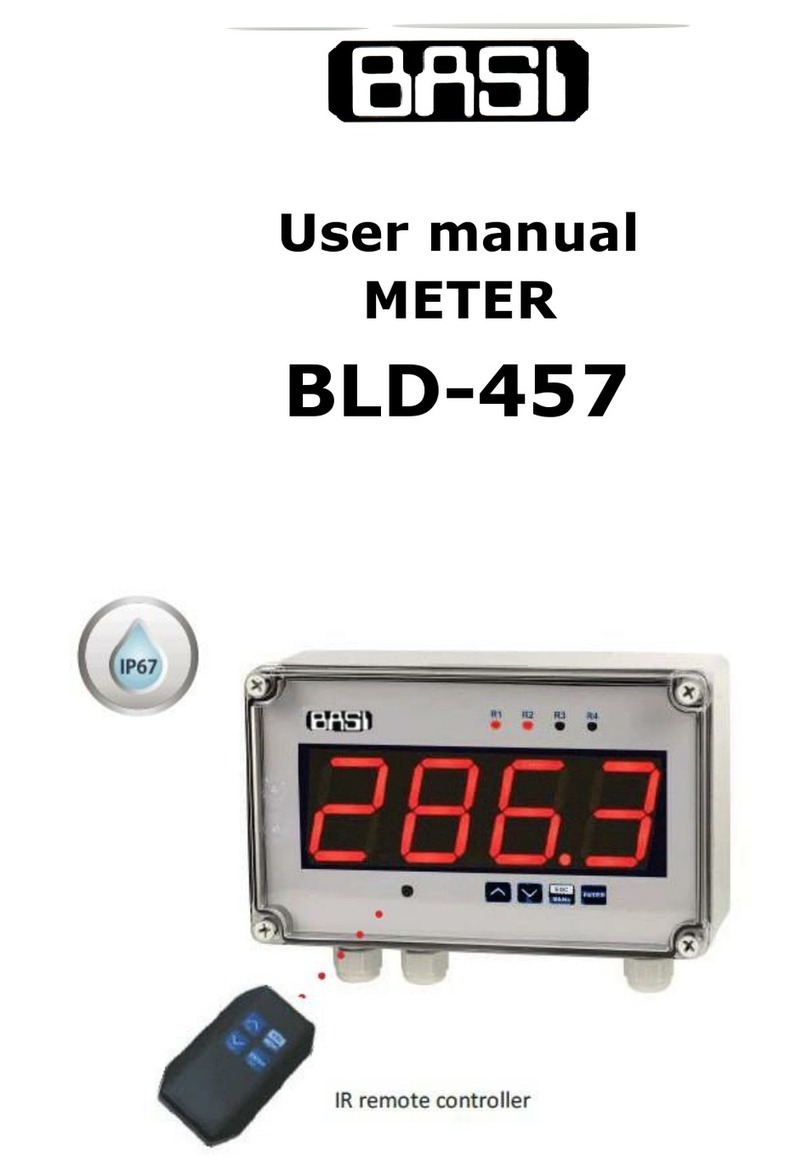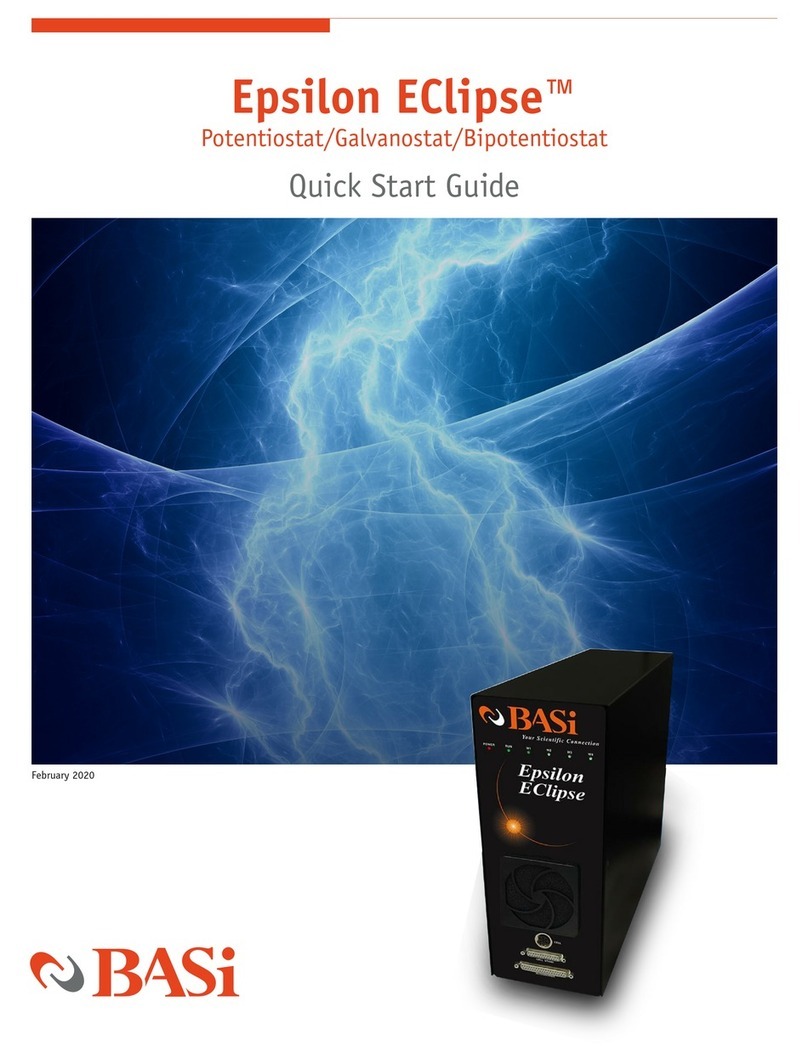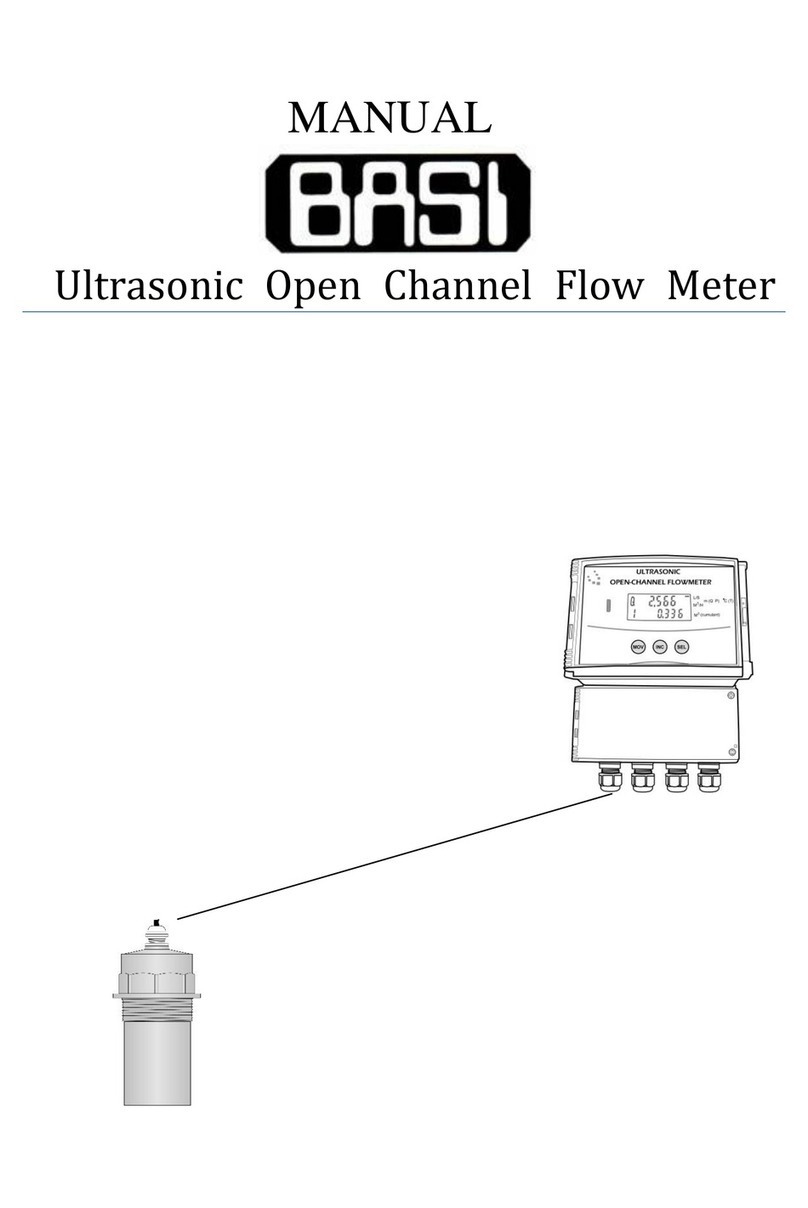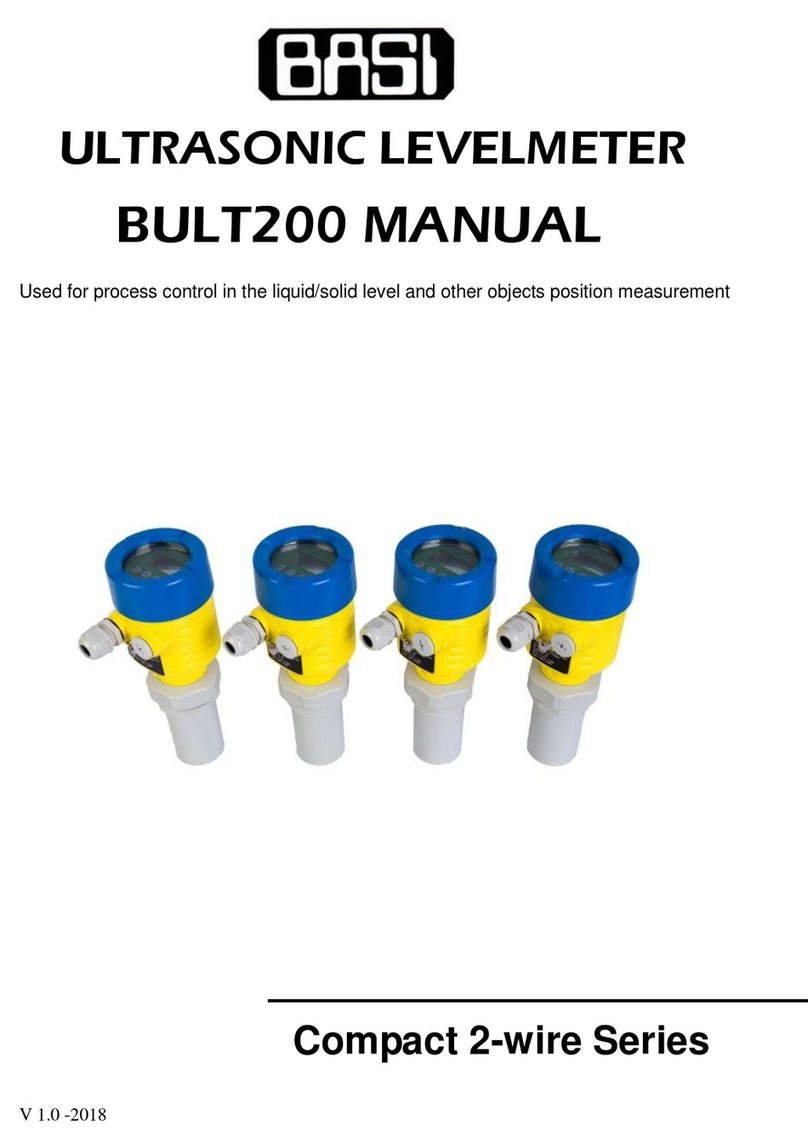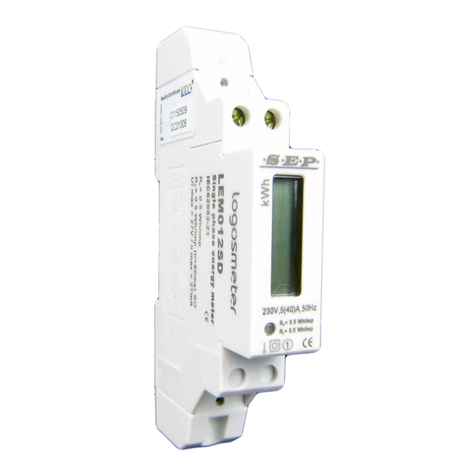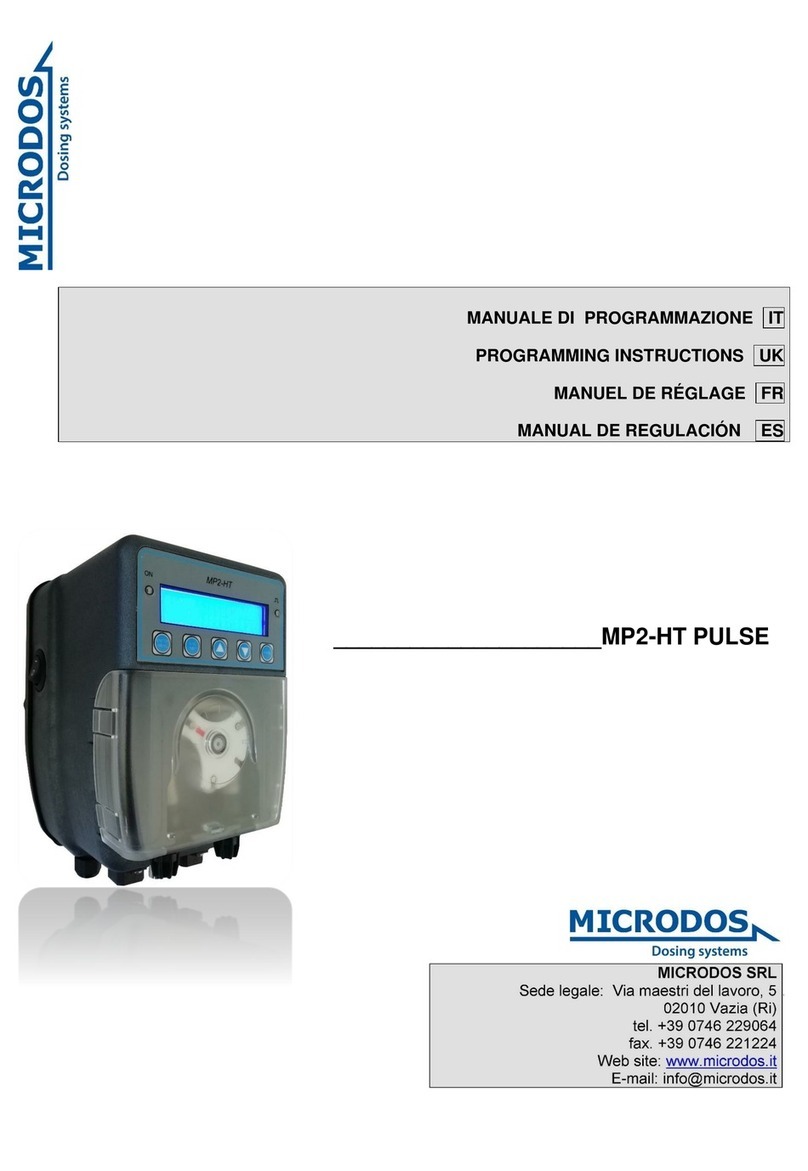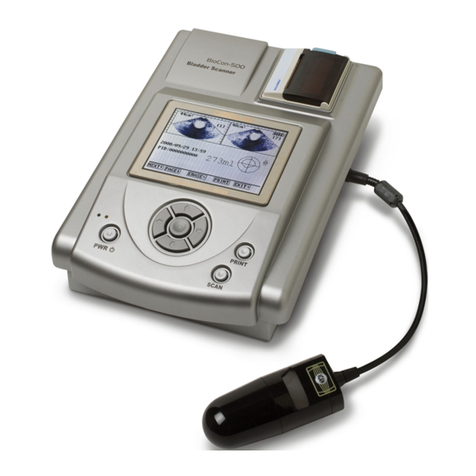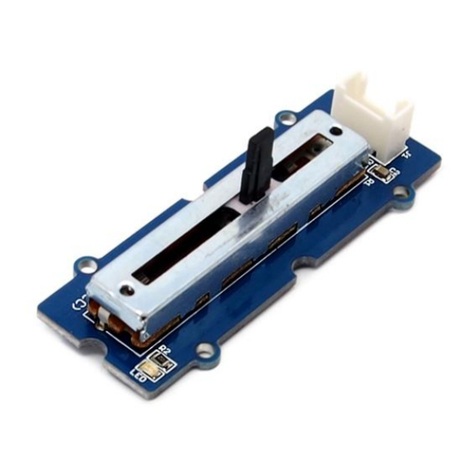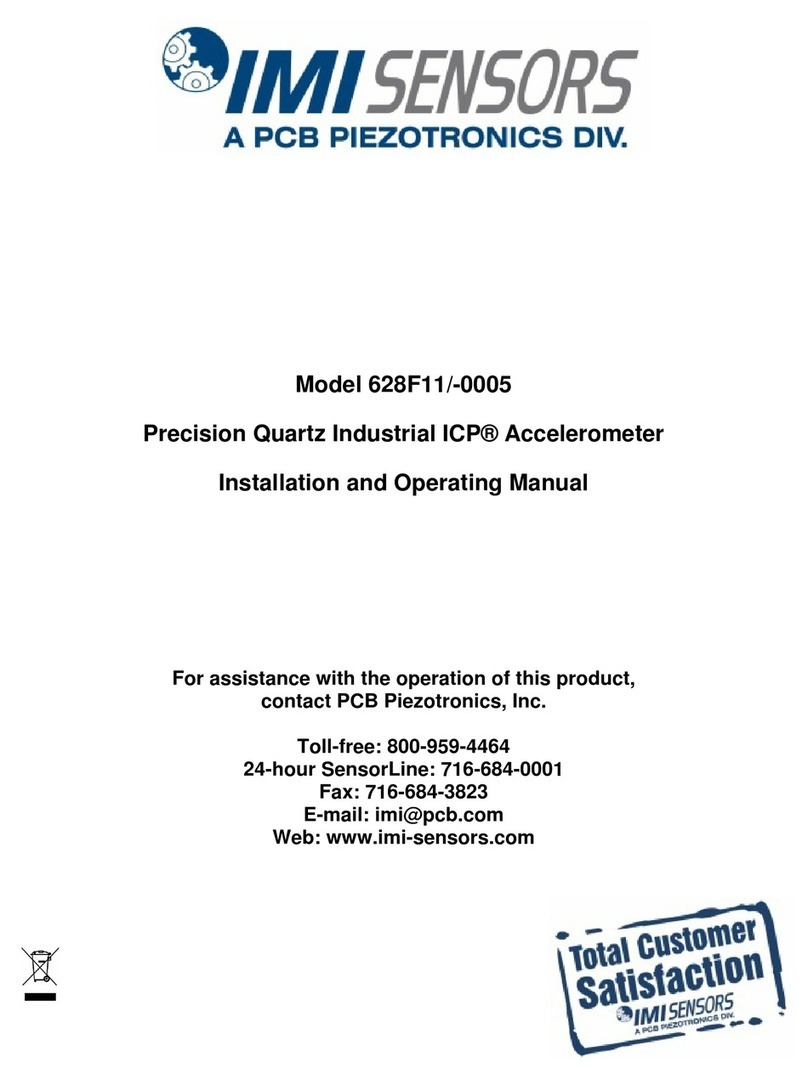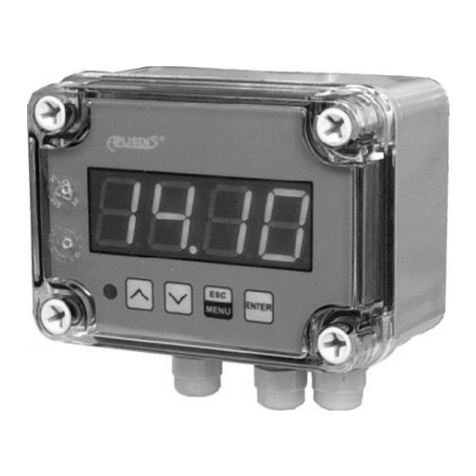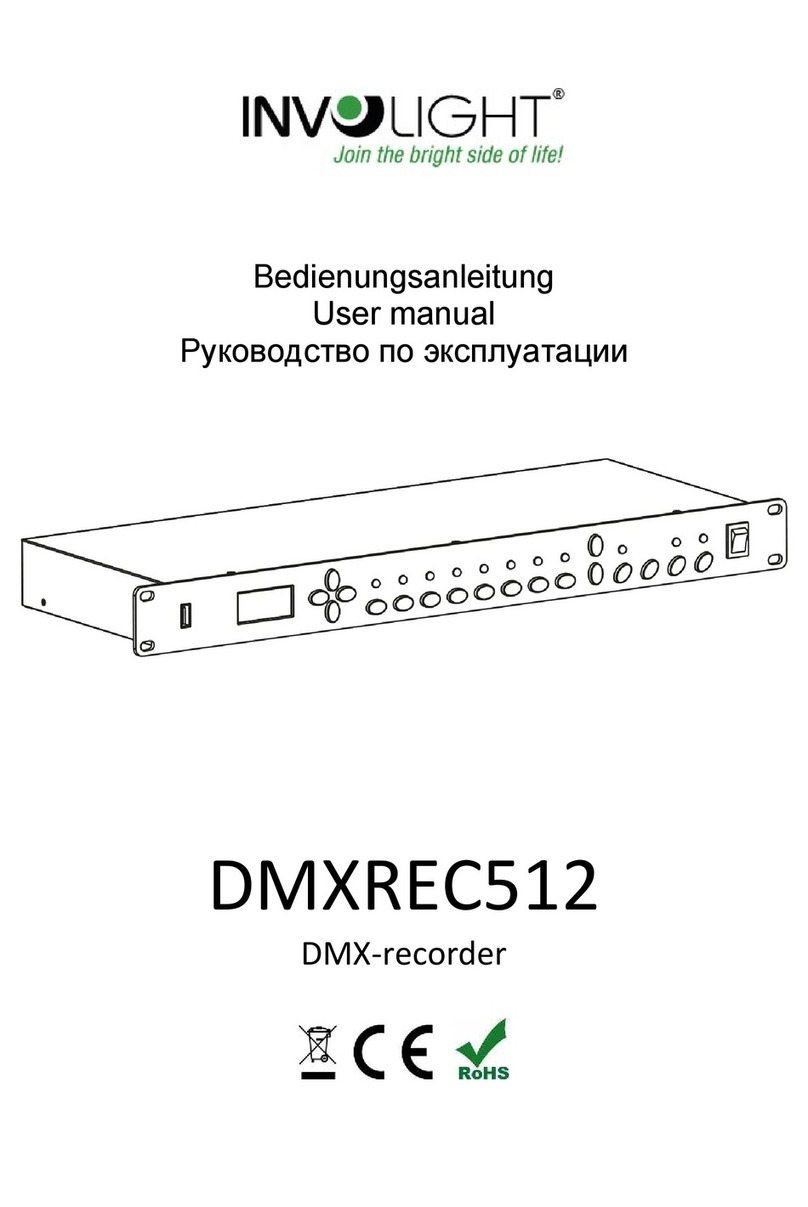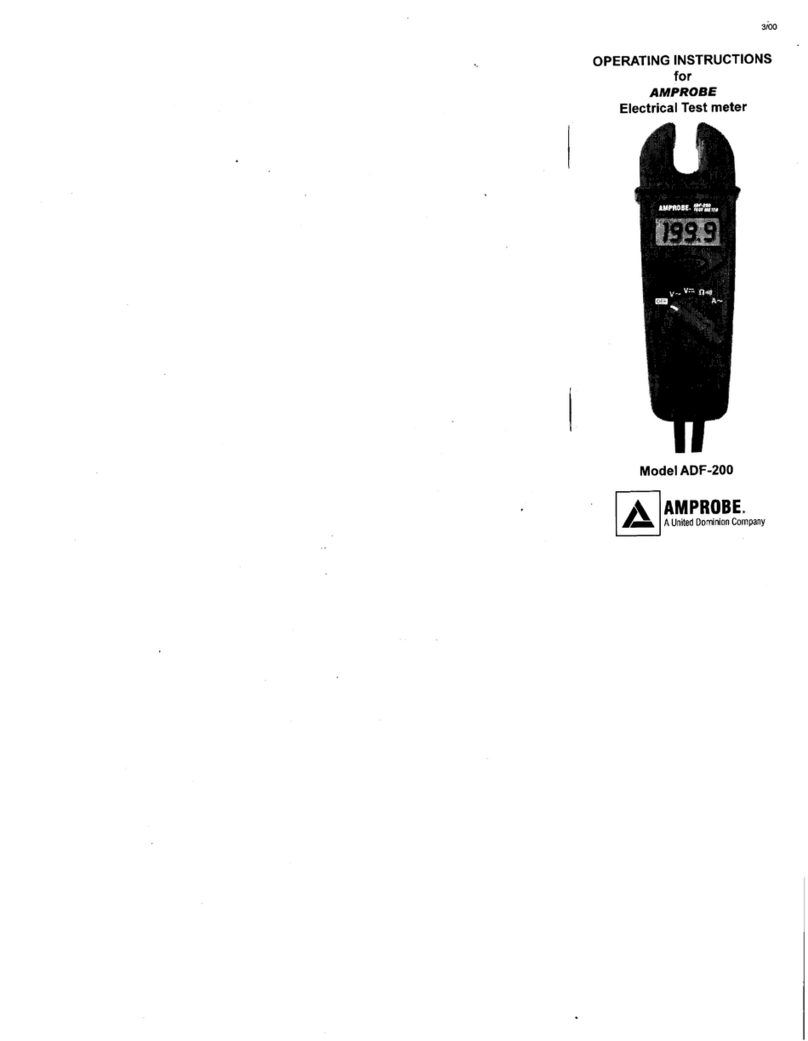BASI BFM921 User manual

BFM921 Electromagnetic flowmeter
User’s manual

Electromagnetic Flowmeter BFM921 BASI
2 Operation manual
Content
1Basic information..............................................................................................................................5
1.1 Basic features ............................................................................................................................5
1.2 Warranty ...................................................................................................................................5
2Mechanical installation.....................................................................................................................6
2.1 Sensor location ..........................................................................................................................6
2.2 Sensor grounding.......................................................................................................................9
3Preparing for start up......................................................................................................................10
3.1 Safety precautions ...................................................................................................................10
3.1.1 Safety symbols used on the equipment ............................................................................10
3.2 Inspecting contents of the package ..........................................................................................10
3.3 Electronic unit description ........................................................................................................11
3.3.1 Front panel.......................................................................................................................11
3.3.2 Under the lid of the flowmeter case .................................................................................12
3.4 Electrical connection ................................................................................................................13
3.4.1 Power supply....................................................................................................................13
3.4.2 Fuse replacement.............................................................................................................15
3.4.3 Electric connection between converter and sensor –Remote version ...............................16
4Flowmeter configuration ................................................................................................................17
4.1 Main menu ..............................................................................................................................17
4.1.1 Overview..........................................................................................................................17
4.1.2 Datalogger .......................................................................................................................17
4.1.3 Status...............................................................................................................................17
4.1.4 Flow.................................................................................................................................17
4.1.5 Volume ............................................................................................................................17
4.2 Setup menu..............................................................................................................................18
4.2.1 General............................................................................................................................18
4.2.2 Measurements.................................................................................................................19
4.2.3 Input/output interface .....................................................................................................20
4.2.4 Calibration .......................................................................................................................21
4.3 Nominal values (standard factory setting) ................................................................................22
4.3.1 General............................................................................................................................22
4.3.2 Measurements.................................................................................................................22
4.3.3 Inputs / outputs ...............................................................................................................23
5Inputs and outputs configuration....................................................................................................24
5.1 General purpose inputs and outputs.........................................................................................24
5.1.1 Current output.................................................................................................................24
5.1.2 Frequency output.............................................................................................................25
5.1.3 Pulse output.....................................................................................................................26
5.1.4 Status (relay) output.........................................................................................................28
5.1.5 PLC digital input ...............................................................................................................29
5.1.6 Limits ...............................................................................................................................29
5.1.7 Dosing..............................................................................................................................30
5.1.8 RS485 interface................................................................................................................31
5.1.9 USB/RSR232.....................................................................................................................31

BASI Electromagnetic flowmeter BFM921
Operation manual Version 13 3
5.2 Command syntax..................................................................................................................... 32
5.2.1 Syntax description ........................................................................................................... 33
5.2.2 Command list .................................................................................................................. 33
Datalogger filling (percentage).............................................................................................................. 48
DPC?.................................................................................................................................................... 48
6Maintenance.................................................................................................................................. 56
6.1 Recommendations for correct operation.................................................................................. 56
6.2 Periodical maintenance ........................................................................................................... 56
6.3What to do in case of failure.................................................................................................... 56
6.4 Error messages........................................................................................................................ 57
7Application information ................................................................................................................. 58
7.1 Specifications .......................................................................................................................... 58
7.2 Weight and dimensions ........................................................................................................... 59
7.2.1 Electronic unit ................................................................................................................. 59
7.2.2 Electronic unit –remote version ...................................................................................... 60
7.2.3 Sensor ............................................................................................................................. 62
7.3 Used materials ........................................................................................................................ 63
7.4 Used pluggable terminal block connectors............................................................................... 63
7.5 Flowrate versus diameter ........................................................................................................ 64
7.6 Type plate ............................................................................................................................... 65
7.7 Terminology............................................................................................................................ 67
7.8 Measuring principle................................................................................................................. 68
8Ordering information ..................................................................................................................... 69
8.1 Options ................................................................................................................................... 69
8.2 Extra ordered options.............................................................................................................. 69
8.3 Example of order..................................................................................................................... 69

Electromagnetic Flowmeter BFM921 BASI
4 Operation manual
Tables
Table 1: Power supply ranges and fuse ratings.........................................................................................15
Table 2 : Remote version connections .....................................................................................................16
Table 3 : User access ...............................................................................................................................18
Table 4 : General settings........................................................................................................................18
Table 5 : Settings for measurement .........................................................................................................20
Table 6 : Input/output interface setup.....................................................................................................21
Table 7 : User calibration.........................................................................................................................21
Table 8 : Nominal values - general ...........................................................................................................22
Table 9 : Nominal values –measurements...............................................................................................23
Table 10 : Nominal values - inputs/outputs..............................................................................................23
Table 11 : Error mask ..............................................................................................................................29
Table 12 : USB/RS232 properties .............................................................................................................32
Table 13 : RS232 error codes ...................................................................................................................32
Table 14 : State output error mask ..........................................................................................................41
Table 15 : Errors......................................................................................................................................57
Table 16 : Dimensions and weights –DIN flanges.....................................................................................62
Table 17 : Used materials ........................................................................................................................63
Table 18 : Connector types......................................................................................................................63
Table 19 : Applicable flowrates for various diameters..............................................................................64
Table 20 : Options...................................................................................................................................69

BASI Electromagnetic flowmeter BFM921
Operation manual 5
1Basic information
1.1 Basic features
The inductive flow meter BFM921 is designed to measure, indicate and record the instantaneous and total
flow of the conductive media flowing through the sensor. The flow meter BFM921 records both forward
and reverse flows. As there are no moving parts in the flow profile the BFM921 can be used to measure
extremely dirty liquids containing solids. The only limitation is that the flowmeter can be used solely with
conductive liquids.
Range of applications. The inductive flow meter BFM921 is for use in the Chemical Industry, Paper
Industry, Water and Wastewater Treatment Industry and most other process industries.
Features. The inductive flowmeter BFM921 is a highly accurate and stable device. The construction of
the BFM921 flowmeter uses components with long-term, time and temperature stability. Configuration
data is backed up and can be recovered after a power failure. The back-up structure enables data recovery
even if a partial loss of data occurs as a result of (e.g. high level electrostatic discharge or a noisy
power supply). Internal CPU provides all functions usually built in electronic flow meters, incl. low
flow rate correction, frequency response setting, bandwidth of sensitivity setting at low flow rates, etc.
Outputs. Flowmeter BM921 is equipped with 6 standard isolated outputs: 4 to 20mA either active or
passive, frequency output, impulse output, status output (with relay), RS485 and USB/RS232 output.
User can configure these outputs.
Inputs. Flowmeter BFM921 has one programmable digital input (PLC).
Power supply. Basic power supply version is 85 to 264 V AC. 12, 24 and 48 DC power supply versions
are also available as an option.
1.2 Warranty
Within the manufacturers general supply conditions, all material and manufacturing faults are covered by
warranty. Upon warranty claim, BASI will test the item and decide whether to repair it or replace with a
new one. Place of the warranty obligation is Swedewn. Further claims on compensation, especially for loss
of production or resultant of damages, are strictly excluded.
Any defects caused by improper use are absolutely not included in the warranty. Excluded from warranty
are also expendable items (as i.e. accumulators, batteries, pushbuttons after attained life time, ribbons, etc.)
In case of a warranty claim the user is asked to give detailed description of the defect and also of
the application for which user use the product. This information is important in order to avoid time and
cost extensive tests and for the eventual achievement of warranty claims from our suppliers and sub-
suppliers. For the item or instrument, returned after the expired warranty time, repair or replacement on
warranty can only be accepted, if manufacturer has been informed in time that a warranty case has
occurred.
Warranty period for all types of electromagnetic flowmeter is 24 months.
The flowmeter should only be used
according to the instructions described in
this operating manual.

Electromagnetic Flowmeter BFM921 BASI
6 Operation manual
2Mechanical installation
2.1 Sensor location
Observe the following instructions to avoid measurement errors due to air bubbles or partially filled pipe.
Flowmeter should be installed in such way, that all electronic controls (such as display, keyboard,
input/output connectors) are easily accessible. Please observe and allocate enough room for opening
flowmeter hinged lid.
Horizontal (standard) mounting
The sensor tube must always remain full. The best way to achieve this is to locate the sensor in a lowsection
of pipe, see the following picture. It is recommended to install the sensor in a section of straight pipe with at
least 5 times the pipe diameter before sensor and 3 times after sensor.
5 DN
3 DN
5 DN
3 DN

BASI Electromagnetic flowmeter BFM921
Operation manual 7
Pipe reducers
If the pipe diameter is not the same as the diameter of sensor, then pipe reducers can be used. So as not to
lose accuracy of the measurement, the slope of reducers should not exceed 8.
Vertical mounting
When the sensor is mounted on a vertical section of pipe, the flow direction must be upwards. In the case of
a downward flow direction, air bubbles could collect in the sensor resulting in unstable and inaccurate
measurement.
Pumps
Never install the sensor on the suction side of a pump or on a section of pipe where a vacuum is possible.
8

Electromagnetic Flowmeter BFM921 BASI
8 Operation manual
Valves
Suitable location of a shutoff valve is downstream of a sensor.
Removal during maintenance
If the application requires removal of the sensor for periodic maintenance, it is recommended to install a
bypass section as the following drawing.
Position of electrodes
The axis of measuring electrodes must be approximately horizontal (see picture).
YES NO

BASI Electromagnetic flowmeter BFM921
Operation manual 9
Vibration
To avoid mechanical damage protect both electronic unit and sensor against mechanical vibrations. When
strong vibrations are possible, both the input and output pipe must be mechanically fixed or the remote
version with a separate electronic unit should be used.
Overheating
To avoid overheating, the electronic unit should be protected against direct sunlight especially in areas with
a warm climate with ambient temperatures over 30 °C. If necessary a sunshade has to be mounted over the
electronic unit or a remote version with a separate electronic unit should be used.
2.2 Sensor grounding
Proper grounding is critical for correct flow meter operation. The sensor is equipped with screw connection
for a grounding wire. This screw has to be connected to both pipeline flanges. Use Copper wire to connect
between the flange and the grounding screw on the sensor.
If the pipeline is made of an electricallynonconductive material, or if the pipe is lined with a similar material,
special grounding rings must be installed between flanges.
Sensor grounding without grounding rings Sensor grounding with grounding rings
Caution!
Do not switch the flow meter on if it’s not properly grounded.
Followinstructionsinchapter 3: Preparing for start upfor proper electrical installation
before switching flow meter on.

Electromagnetic Flowmeter BFM921 BASI
10 Operation manual
3Preparing for start up
3.1 Safety precautions
The instrument has been designed according to EN 61010-1:2011. Safety is ensured by the design and by the
use of specific component types. Manufacturer is not liable for the damage caused by not following
instructions present in this manual or modification of the construction or replacement of parts with non-
original ones.
3.1.1 Safety symbols used on the equipment
Warning, reference to the documentation
Lucy286
3.2 Inspecting contents of the package
Basic package includes the following items:
Flanged sensor
Electronic Transmitter (integral or remote)
Spare fuse
Operating manual.
Calibration certificate
Software FlowAssistant
USB A-B cable
The flowmeter is delivered ready for use after connecting to the power supply. Please check that it has been
correctly installed according to chapter Mechanical before turning power on. Only a power supply with the
appropriate voltage and frequency must be used, see ordering information in chapter “Power supply”.
Caution!
Only a competent person may connect the flowmeter to the mains power supply.
To prevent accidents, connect main power only after all other wiring has been
completed.
Use only specified voltage and frequency for user flow meter version.
Take national applicable laws and rules into account.

BASI Electromagnetic flowmeter BFM921
Operation manual 11
3.3 Electronic unit description
3.3.1 Front panel
Display
Flowmeter features graphic display with backlight with resolution of 128x64 pixels.
Keyboard
6 keys enable user to change flowmeter configuration. Menus can be navigated with four arrow keys, user
can confirm or cancel configuration with Enter and Escape keys.
Hinged lid
Lid can be opened by first pulling hinge retainer to the direction outside of the case, then pulling lid in the
front to open it. Lid is mounted to open from left to right, opposite direction is available as option. Hinge
assembly can be also reassembled by qualified user later if needed, to enable lid to be opened from opposite
side of the case.

Electromagnetic Flowmeter BFM921 BASI
12 Operation manual
3.3.2 Under the lid of the flowmeter case
Power supply voltage terminal, fuse holder
Connect appropriate supply voltage to pluggable terminal block. For more information please refer to chapter
Electrical connection.
I/O interface terminals
Connect desirable input or output to pluggable terminal blocks. Frequency, impulse and status outputs are
galvanically connected to each other (sharing common ground –COM), and galvanically isolated from other
electronic circuits of flowmeter. For more information and configuration of input and outputs please refer to
chapter Inputs and outputs configuration.
USB connector
Flowmeter configuration can be changed by remote commands. For more information please refer to chapter
USB/RSR232.
Coils and electrodes terminal
Please connect coil, electrodes to pluggable terminal block.

BASI Electromagnetic flowmeter BFM921
Operation manual 13
3.4 Electrical connection
The flowmeter can be connected to the power supply with either a fixed power cable or with a flying lead
cable and plug. Cable entries on the electronic unit can be used for flexible electrical cables. Cables with a
diameter between 8 and 10 mm must be used to keep protection IP67. It is not recommended to use rigid
metal or plastic conduits.
If user use a cable and plug it is recommended that the cable has a cross-section of 3 x 1.5mm2and with a
minimum length of 1 m.
.
3.4.1 Power supply
To connect the compact version to the power supply the following procedure should be used :
1. Disconnect power to the unit before attempting any connection changes.
2. Open flowmeter case.
3. Connect the protective earth (PE) –ground wire, line and neutral to supplied pluggable part of terminal
block.
4. Insert pluggable part of terminal block to connector on PCB. Connector has 3 pins and is located in the
bottom right corner of the bottom PCB. Please observe connector polarity.
5. Secure pluggable connector flanges tightening screws.
6. Close flowmeter case
7. Switch on the power supply.
Caution!
Only a competent person may connect the flowmeter to the mains power supply.
Protective earth conductor (PE) must be longer than neutral (N) and phase (L) conductors
after mounting mains supply voltage wires into pluggable terminal block on PCB.
Pluggable part of terminal block for mains voltage have to be secured by side flange screws
during flowmeter operation.
To prevent accidents, connect main power only after all other wiring has been completed.
In the case of a fixed connection an independent power switch or circuit breaker should be
located as close as possible to the flowmeter.
Only cables rated for appropriate voltage, current and temperature should be used for
wiring any electrical connections to the flowmeter.
Do not cross or loop cables inside electronic unit.
Use separate cable entries for power supply, input/output signal wires and electrodes/coils
(remote version) Each of the cable entries has its own cable grommet.
Take national applicable laws and rules into account.

Electromagnetic Flowmeter BFM921 BASI
14 Operation manual

BASI Electromagnetic flowmeter BFM921
Operation manual 15
3.4.2 Fuse replacement
A mains fuse is located in the bottom left corner of the flowmeter case. The fuse must only be exchanged by
a competent person. Procedure is as follows:
1. Disconnect the power supply from the flowmeter before attempting any connection changes.
2. Open flowmeter case.
3. Unscrew top part of the fuse holder by a hand turning top part to the left. Remove the fuse. Replace it
with new fuse with the same voltage and current rating. Fuse parameters can be seen in Table 1.
4. Close flowmeter case.
5. Switch on the power supply.
Flowmeter is delivered in four power supply versions with different fuses:
Nominal range
Range
Version
Fuse
230/115V AC 50/60Hz
85 V to 264 V AC
47-65 Hz
BFM921-Vxx0x
315 mA
12V DC
9 V to 18 V DC
BFM921-Vxx1x
2 A
24V DC
18 V to 36 V DC
BFM921-Vxx2x
1 A
48V DC
36 V to 75 V DC
BFM921-Vxx3x
1 A
Table 1: Power supply ranges and fuse ratings

Electromagnetic Flowmeter BFM921 BASI
16 Operation manual
3.4.3 Electric connection between converter and sensor –Remote version
Converter and flanged sensor are connected with two (2-wire unshielded and 3-wire shielded) cables.
Standard length of cables is 6 meter. It is recommended to mount the transmitter as close as possible to
flanged sensor. Five-terminal connector is located in separated box. The same box is used for the converter
and also for the sensor. Colors of wires are following:
:
Use the following procedure to connect sensor cable to the
transmitter or sensor:
1. Switch off power supply.
2. Dismount top cover of connection box. Four screws
must be removed.
3. Connect 5 wires to the connector.
4. Fill the box with connected wires with reenterable
insulating and sealing compound to archieve ingress
protection corresponding to IP67 (transmitter) and
IP68 (sensor). One piece of compound is standard part
of delivery.
5. Mount the cover back.
6. Switch on power supply.
3-wire shielded cable
(shielding is connected to the green wire)
Blue (Brown)
Electrode 1 (EL1)
Green
Ground
Red (White)
Electrode 2 (EL2)
2-wire cable
Brown
Excitation 1
(EXCITATION)
White
Excitation 2
(EXCITATION)
Table 2 : Remote version connections
Caution!
Unsealed box has ingress protection level IP65 only.

BASI Electromagnetic flowmeter BFM921
Operation manual 17
4Flowmeter configuration
4.1 Main menu
Main menu is the first menu that appears on power up and can be always reached from all other menus by
pushing the ESC key repeatedly. Main menu can be navigated by using four direction arrow buttons. UP
and DOWN buttons are used to switch to next and previous screen in main menu. Pressing LEFT button,
user can switch instantly to first main menu screen, by pressing RIGHT button to last main menu screen. On
the right side of the screen, navigation bar can be seen, to note user of actual screen.
4.1.1 Overview
This screen is displayed as first after device start as default. Actual flow, total
volume and auxiliary volume is displayed on this screen. Bottom item (auxiliary
volume as default) can be changed to display other types of volume in Setup
menu/General/Display.
4.1.2 Datalogger
This screen displays and provides access to Datalogger function. Datalogger
records can be reviewed using LEFT and RIGHT buttons.
4.1.3 Status
This screen displays information about device state and configuration. On the first
line, date and time are displayed.
4.1.4 Flow
This screen displays actual and other types of measured flow.
4.1.5 Volume
This screen displays total and other types of measured volume.

Electromagnetic Flowmeter BFM921 BASI
18 Operation manual
4.2 Setup menu
Setup menu provides access to flowmeter configuration and can be accessed by pressing Enter button from
Main menu and entering appropriate password. There are three levels of acces to flowmeter. Passwords can
be changed in Setup menu/General/User access. In the following tables, settings requiring Calibration access
are marked as underlined.
Access level
Default password
User
00000
Calibration
10000
Service
Only for qualified service
personal.
Table 3 : User access
4.2.1 General
Setup menu/General
Level 1
Level 2
Description
About device
Basic information about device such as serial number,
SW/HW versions and pipe diameter can be displayed
on screen.
Language
User can switch flow meter language in this menu.
Display
Backlight
Display backlight can be set on or off in this menu.
Contrast
Configuration of display contrast.
Startup screen
User can specify which screen of main menu should
be displayed after flowmeter startup.
Aux item
User can choose from various types of measured flow
to display as bottom item on Overview screen in main
menu.
Date & time
Time
Date, time and date format can be changed here. Flow
meter features backup voltage source to date and
time backup in case of power outage.
Date
Date format
User access
Change basic password
Flowmeter user acces control.
Change calibration password
Factory settings
Restore calibration points
User can restore flowmeter settings to factory
configuration here.
Restore other settings
Restore all settings
Table 4 : General settings

BASI Electromagnetic flowmeter BFM921
Operation manual 19
4.2.2 Measurements
Setup menu/Measurements
Level 1
Level 2
Description
Flow
Unit
Function enables user to set flowrate units.
Available units are:
l/s (litres per second)
m3/h (cubic metres per hour)
UG/m (US gallons per minute)
IG/m (imperial gallons per minute)
user user-defined unit
User unit
Function enables user to set the name of user unit.
Maximum length is three letters.
User constant
Function enables user to set the conversion constant for
user unit. This constant is calculated as the ratio
between flowrate in [l/s] and flowrate in [user unit].
Resolution
Setting enables user to change number of displayed
digits for flow measurement in main menu.
Direction
Function enables user to switch between “Positive”
and “Negative” flow direction (change the sign in
flowrate value).
Note: Flowmeters are working in both flow directions.
However standard calibration is made for positive
direction only.
Low flow cutoff
Function enables user to set limit for suppressing low
flowrates. Available range is according to the nominal
diameter.
Note: All flowrates below this value will be displayed as
0. This setting is valid for display and all outputs.
Moving average
Function enables user to change sampling time in
seconds for moving average calculation. Available range
is between 1 and 20 seconds.
Note: Response time of flow meter to fast changing flow
can be compromised if large number of samples to
average is selected.
Clear min,max flow
User can clear minimal and maximal measured flow.
Volume
Unit
Function enables user to set volume units.
Available units are:
m3 (cubic metres)
l (litres)
UG (US gallons)
IG (US gallons)
user (user-defined unit)
User unit
Function enables user to set the name of user unit.
Maximal length is three letters.
User constant
Function enables user to set the conversion constant for
user unit. This constant is calculated as the ratio
between volume in [l] and volume in [user unit].
Resolution
Setting enables user to change number of displayed
digits for volume measurement in main menu.
Clear volume
User can clear auxiliary or daily or positive and negative
measured volume.

Electromagnetic Flowmeter BFM921 BASI
20 Operation manual
Temperature
Unit
Function enables user to set temperature units.
Available units are:
°C
°F
K
Datalogger
Interval
Function enables user to set sample interval for internal
datalogger between 5 and 240 minutes, or turn
datalogger off.
Memory usage
Function displays memory usage in %. Datalogger
capacity is over 100 000 samples.
Clear
Function enables user to clear datalogger memory.
Table 5 : Settings for measurement
4.2.3 Input/output interface
Following table lists only brief explanation of configuration of inputs and outputs. For more detailed guide
on inputs and outputs configuration see chapter Inputs and outputs configuration.
Setup menu/I/O interface
Level 1
Level 2
Description
PC interface
Active bus
Active bus can be selected between RS232 and RS485 protocols.
RS485 address
RS485 address can be assigned from 0 to 31.
Baudrate
Baudrate can be selected from 1200 to 115200.
Mode
Output mode can be selected from normal, Modbus RTU and Modbus
ASCII
Modbus parity
Modbus parity mode can be selected from none, even or odd parity.
Modbus address
Modbus address can be selected from 1 to 247.
Current
output
Mode
Output mode can be selected from Off, Positive flow, Negative flow,
Absolute flow, Bipolar flow and Fixed.
Fixed current
Item allows setting current amplitude in the current mode f) (Fixed). The
range is from 4 mA to 20 mA.
Qi 20mA
Item allows setting the Qi constant. Qi represents a flowrate for a
current of 20 mA and can be set
independently to the nominal diameter of the sensor.
Loop test
Item allows enable/disable the current loop test. The flowmeter will
detect a fault (Error 08 –Current open)
if the test is enabled and current loop is not connected.
Error current
Item allows setting current loop error current from 3 mA to 3.75 mA or
from 21 mA to 24 mA. Current
output is switched to selected value in case of present error state in flow
meter.
Frequency
output
Mode
Output mode can be selected from Off, Positive flow, Negative flow,
Absolute flow, On positive, On negative, On In, On out, Dose on, Dose
off, On<F2, On>F2 and Fixed.
Fixed frequency
Item allows setting frequency in the frequency mode m) (Fixed). The
range is between 10 and 12000 Hz.
Qf 1kHz
Item allows setting the Qf constant. Qf represents the flowrate for the
frequency 1000Hz and can be set
independently to the nominal diameter of the sensor.
Pulse
output
Mode
Output mode can be selected from Off, Positive flow, Negative flow,
Absolute flow, On positive, On negative, On In, On out, Dose on, Dose
off, On<F1, On>F1 and Fixed.
Pulse width
Item allows setting pulse width in ms. Available widths are 2.5, 5, 10, 25,
50, 100, 250 and 500 ms.
Table of contents
Other BASI Measuring Instrument manuals
Popular Measuring Instrument manuals by other brands

Jäger Direkt
Jäger Direkt OPUS 55 SENS installation guide
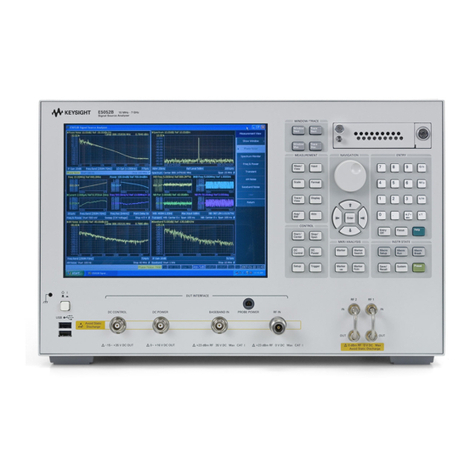
Keysight
Keysight E5052B Service guide
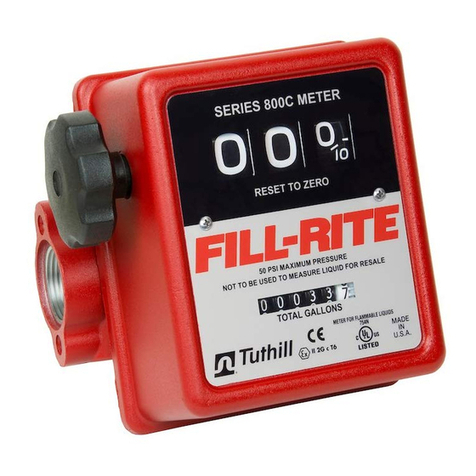
FILL-RITE
FILL-RITE 806C Owner's operation & safety manual
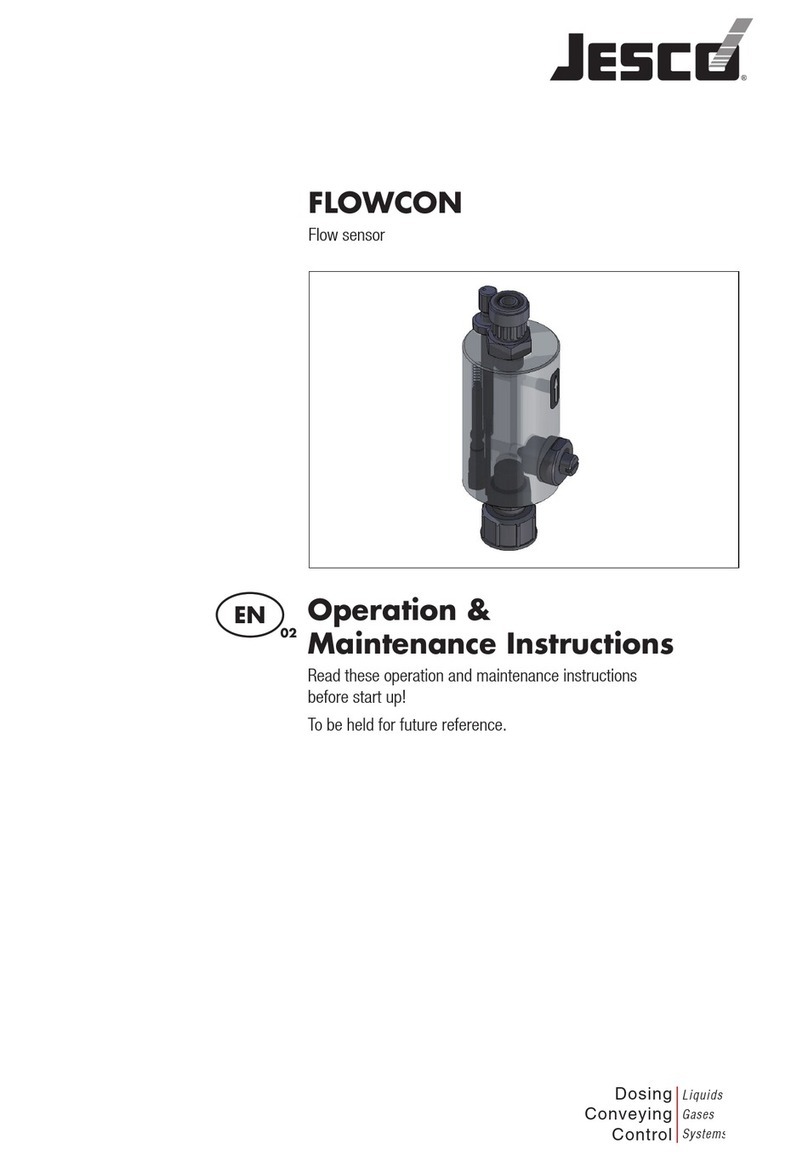
Jesco
Jesco FLOWCON Operation & maintenance instructions
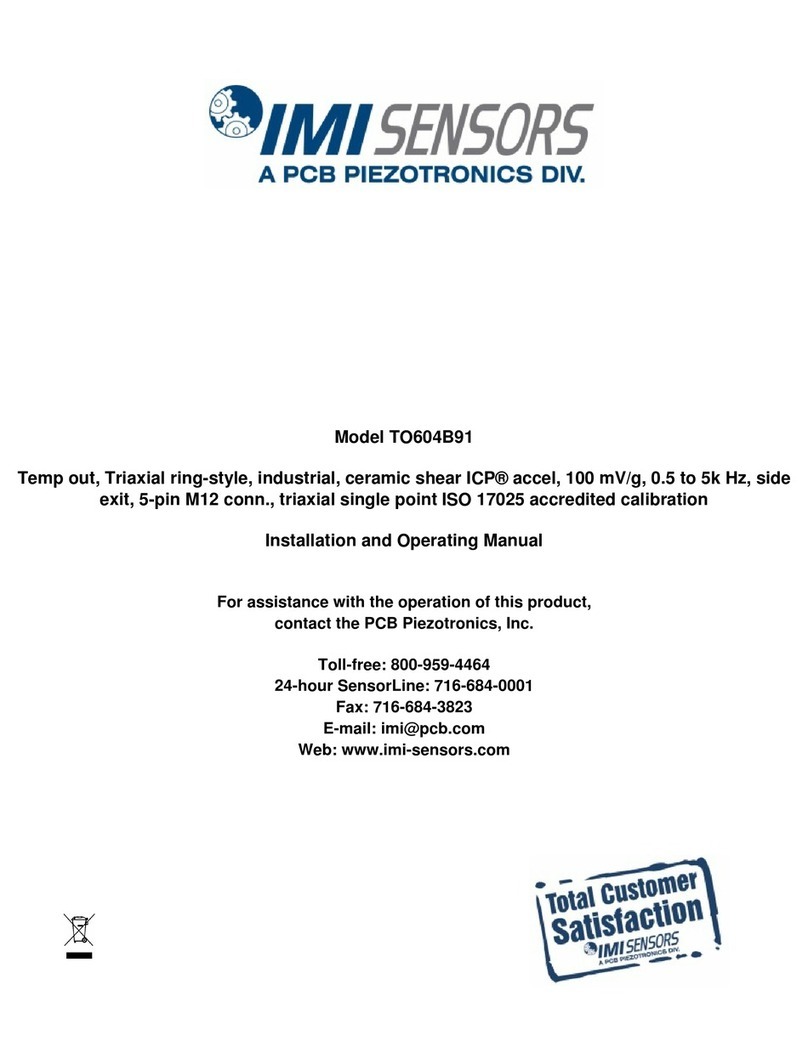
PCB Piezotronics
PCB Piezotronics IMI SENSORS TO604B91 Installation and operating manual

Eyedro
Eyedro EYEDRO-HOME Product guide
